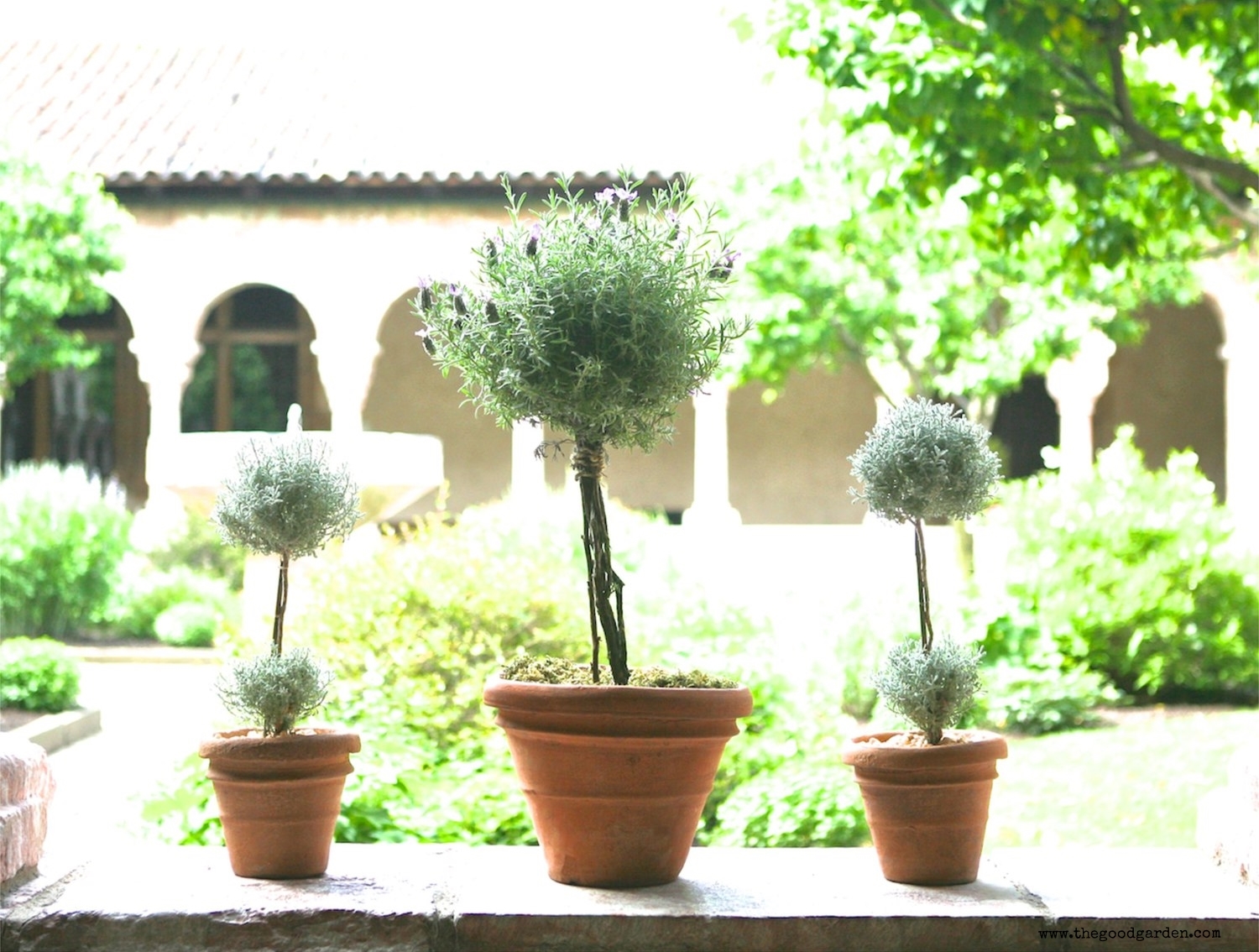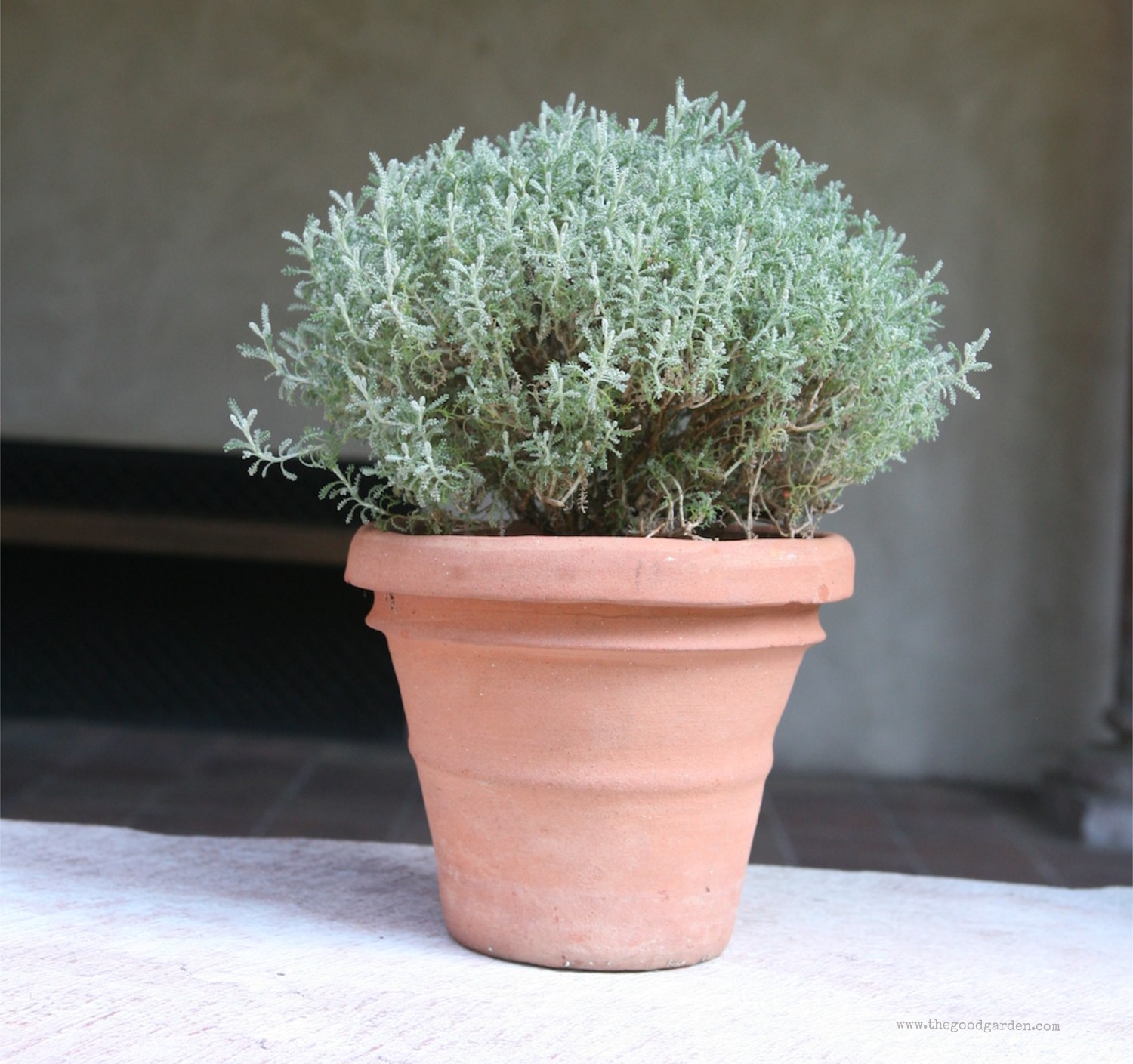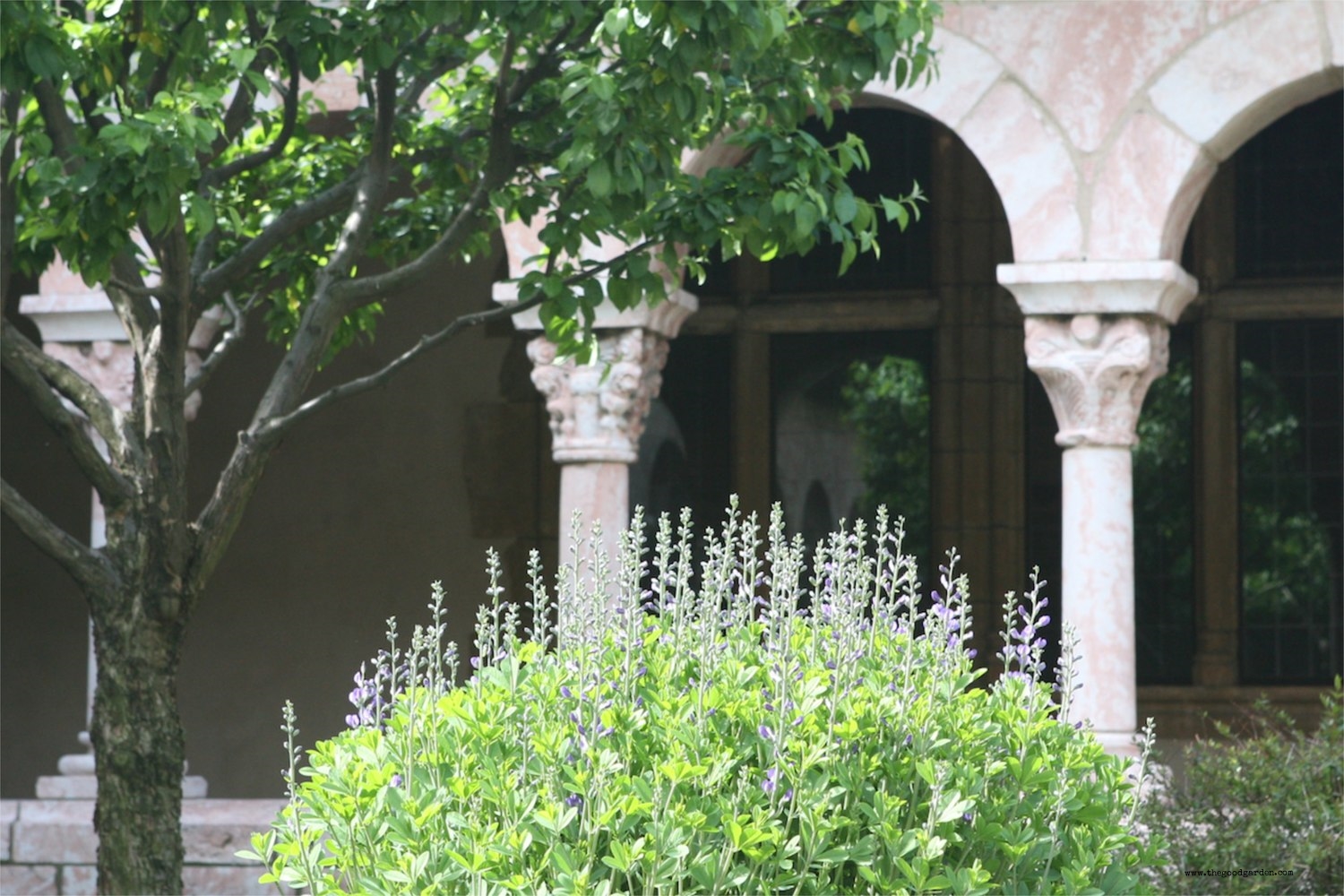Historic gardens are full of ideas. Cloister gardens remind us of the power of appealing to all of our senses.
Opportunities to see, hear, smell, and touch are easily delivered in the garden. Our fifth sense, taste, comes from herbs and edible plants that are often absent in purely ornamental gardens, but is an integral part of the traditional cloister garden.
In an article in Mother Earth Living, The Cloister’s museum former Associate Horticulture Manager, Deidre Larkin, said that in their gardens “We grow 250 to 325 [different] herbs…. Many of the herbs we value today were grown and used in the Middle Ages.”
In the Cuxa Cloister garden shown above, perennial herbs are planted in the ground and others, like rosemary and myrtle, are beautifully planted in pots. Thus making them easy to move into a sheltered space when the weather turns cold. These hand-made terra cotta containers are among my favorites. Their organic irregularity reflects the hands that created them, infusing them with character absent in machine made containers.
An herb garden in hand-made containers is the perfect way to channel the Medieval garden. Larkin suggests starting with mint, lemon balm, and comfrey. In northern climates, this is a perfect winter project.
For all their stiffness, Cloister gardens deliver quiet, sheltered spaces, and are unique in terms of engaging all of our senses.
Learn more about the the garden pictured above from a recent post here.




